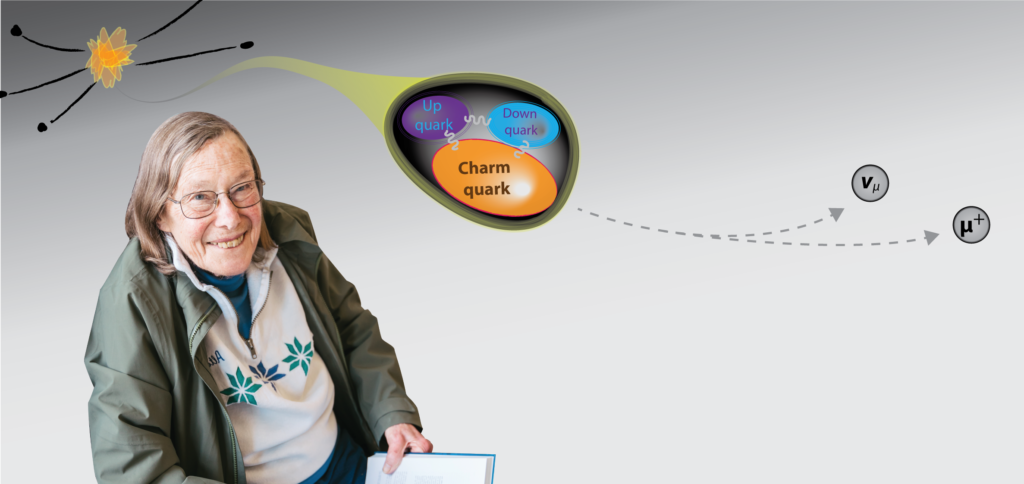Faculty Profile: Mary K Gaillard
May 10, 2020

Subatomic particles, like the charmed Sigma particle, are composed of quarks that give them mass. These unstable particles form in highenergy collisions and rapidly decay into lower mass states. Image Design: Johan Jaenisch, Photo Credit: Kazuomori Lewis
In 1981, Dr. Mary Gaillard arrived at UC Berkeley as the first female professor in the physics department. She came from Switzerland, where she worked at CERN (European Organization for Nuclear Research). Dr. Gaillard has spent her career studying particle physics—a field that uses elegant mathematics and rigorously designed experiments to describe the smallest units of matter that make up the universe. Gaillard is most well-known for characterizing a subatomic particle known as the charm quark, filling a gap in equations describing particle decay. As with all quarks, charm quarks are elementary particles, which means that they are not made up of smaller particles. Regarding the significance of charm quarks, Gaillard explains, “It’s important if you think it’s important to understand what the universe is made of.” Today, she’s an emeritus professor conducting research on supersymmetry, which predicts that for every elementary particle we know about, there is a hypothetical companion particle. If true, the theory of supersymmetry would solve several existing problems in particle physics. This research extends to a supersymmetric version of gravity, called supergravity. Gaillard explains, while “gravity by itself is hard to reconcile with quantum mechanics, supergravity has a better possibility.” The current central theory of physics is called the Standard Model, which incorporates three of the four fundamental forces of nature: strong, weak, and electromagnetic. Finding a place in the equation for the fourth force, gravity, would be easier using supergravity, and could lead to an all-encompassing “theory of everything.”
—TUESDAY SIMMONS
This article is part of the Spring 2020 issue.




